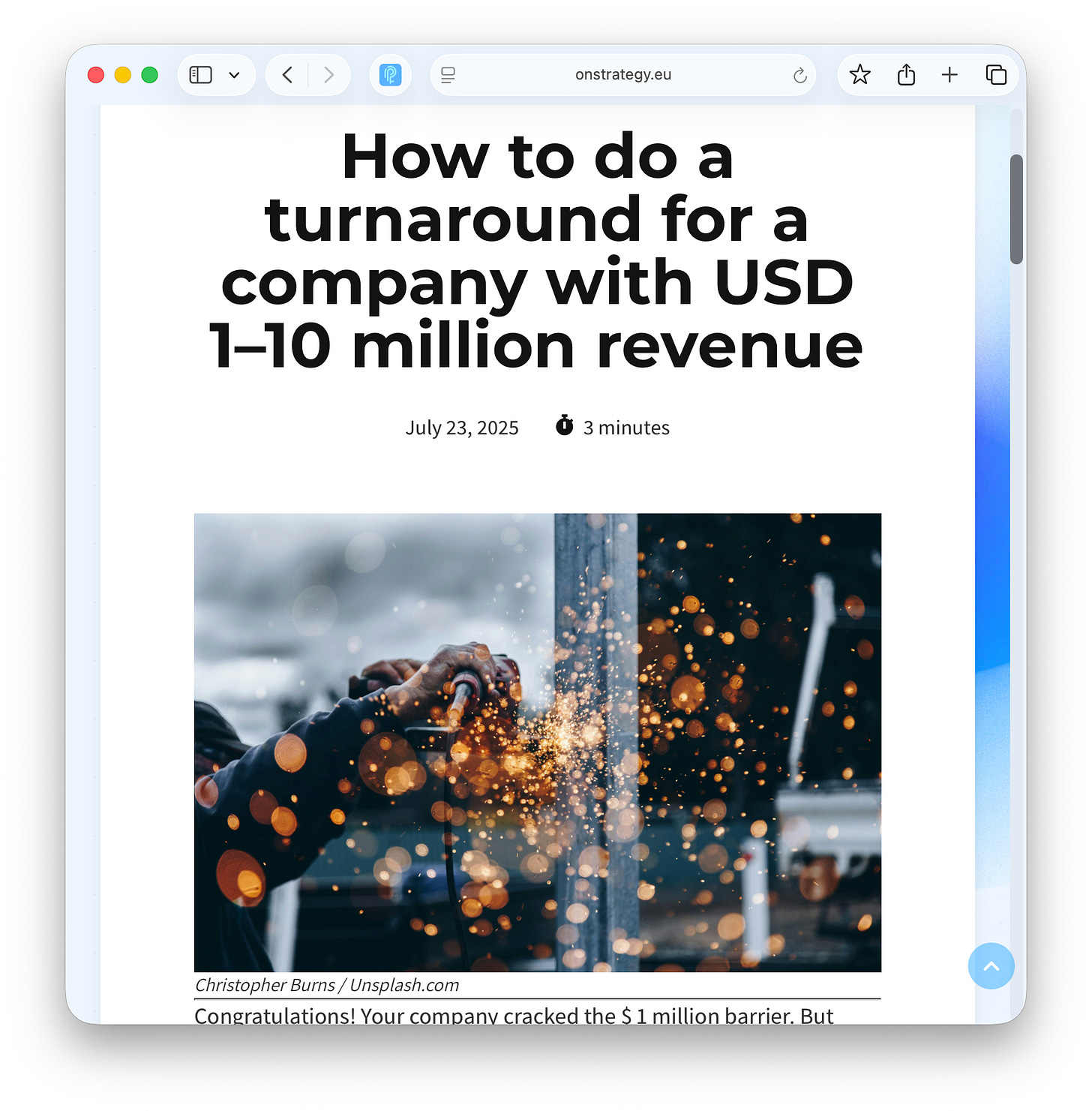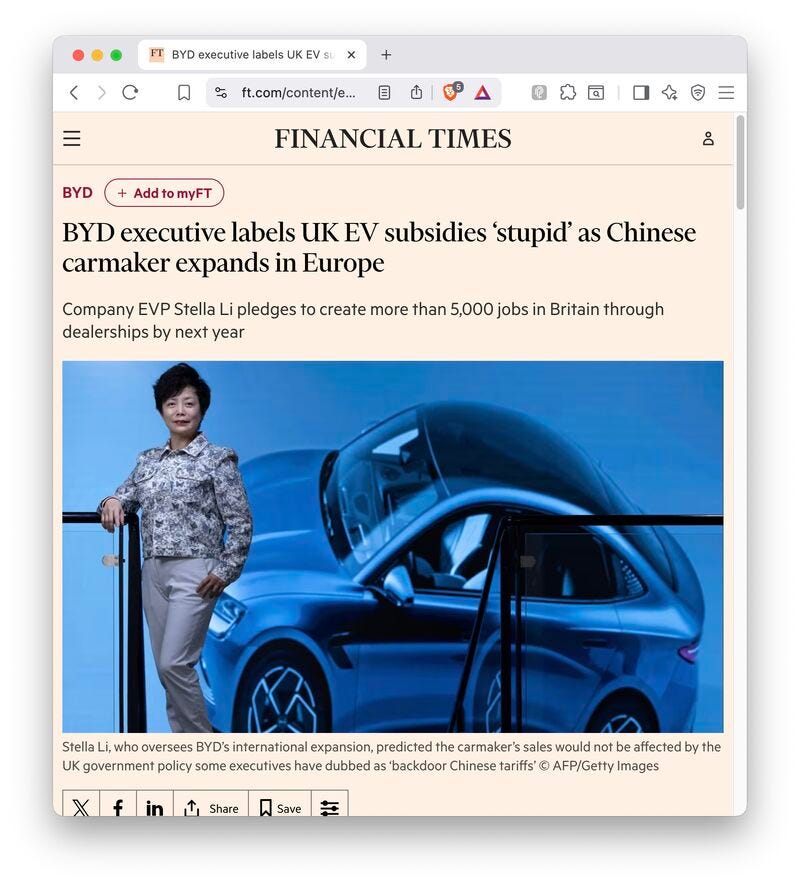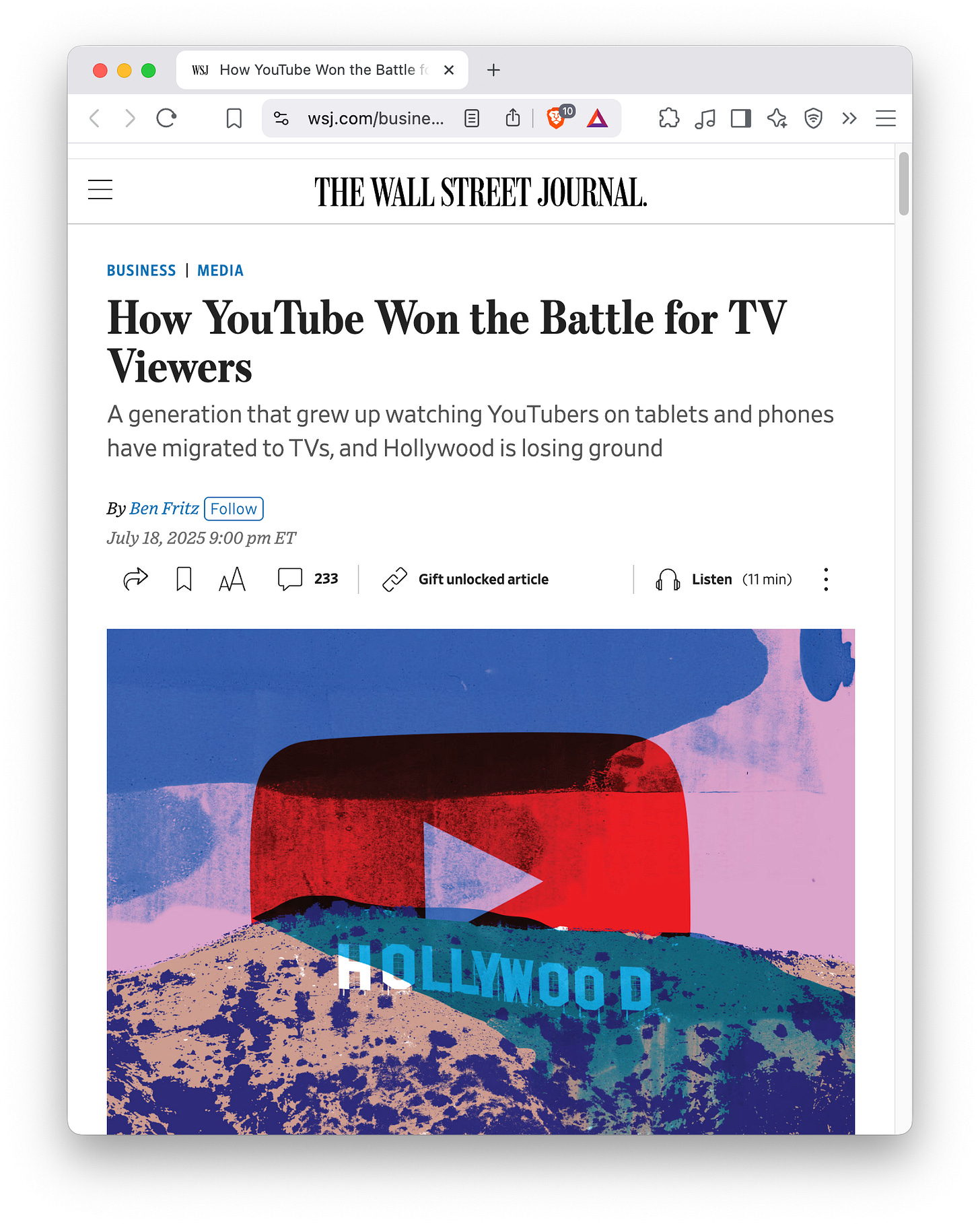(#136) [Essay] How to do a turnaround for a company with USD 1–10 million revenue
The next trillion-dollar company will come from AI hardware
Thank you for being one of the +4,000 minds reading this newsletter
Here is what you’ll find in this edition:
[Essay] How to do a turnaround for a company with USD 1–10 million revenue
Cynicism at its best from a Chinese company
The next trillion-dollar company will come from AI hardware
How YouTube won the battle for TV viewers
PRINCIPLE: Brains are powerful
…and more 👇
Onto the update:
[Essay] How to do a turnaround for a company with USD 1–10 million revenue
Last week, I presented how to do a turnaround for a company with less than USD 1 M in revenue. Here is an essay for the next threshold: USD 1 - 10 million.
Congratulations! You’ve taken over (or started) a small company that’s stuck, stalled, or sliding backward. Maybe revenue growth flatlined, customer churn increased, or you’re just buried under operational noise. Here’s the brutally practical playbook for turning things around in the AI era.
Step 1: Get real (with yourself and the team)
Companies under USD 1M in revenue rarely fail due to competition. They usually fail because founders deny reality.
Gather your team into one room (no Zoom!). No fluff, no motivational speeches, just put the real numbers on a screen:
Monthly revenue
Cash runway
Growth rate
Customer churn rate
Say this out loud: “If nothing changes, we won’t be here next year.”
Bring customer feedback, financial analysis, anything to give insights your team can digest. (continue reading here)
Cynicism at its best from a Chinese company
BYD is a company that’s been suckled on industrial policy since birth, nourished by cascading layers of state subsidies: upstream lithium deals, midstream battery tech, downstream factory construction, and the occasional strategic nudge from the CCP reminding local governments to, you know, maybe buy a few thousand units.
And now that the UK tries to play the same game (poorly, with less money) and BYD rolls its eyes and lectures them about market distortion like it’s Milton Friedman in a windbreaker.
You have to admire the cynicism. It’s like watching a poker player scoff at someone for bluffing... with a sleeve full of aces. BYD knows they can sell cars at a loss, still turn a profit, and then call it innovation.
Meanwhile, European automakers are stuck negotiating with unions, retrofit costs, and a continent that still thinks emissions come with guilt.
BYD’s response? Build 2.000 dealerships, sponsor Inter Milan and give your critics a warm hug while you undercut them in their own showroom. Diplomacy 2025. LINK
The next trillion-dollar company will come from AI hardware
Sam Altman’s tweet signals a clear direction where scale is the strategy. And when Altman says "100x," he’s pointing to a future where compute capacity becomes the key driver of differentiation, not just model architecture.
As foundational models grow in complexity and cost, competitive advantage shifts to those who can control the entire stack (ie. from training to inference, from datacenter cooling to custom silicon).
The constraints of general-purpose chips are becoming too rigid for the needs of advanced AI systems. Performance, efficiency, and availability will increasingly depend on tailored hardware optimized for specific workloads.
This means the next wave of AI leaders (ie. also the next trillion-dollar companies) may not come from the labs refining models, but from the companies designing and delivering the chips those models depend on.
on META's Superintelligence Team 👩💻👨💻
The most overqualified Google Sheet in history. Or the founding team of whatever replaces civilization. Hard to say.
This list puts to shame any McKinsey Superintellicence team (ouch!). Also, everyone has at least one PhD, "speaks" Linear algebra, and probably has a second passport.
This is Meta’s Avengers moment, except instead of flying suits and gamma radiation, the superpowers are diffusion models, graph neural nets, and Transformer theory. Half the team is Chinese, most are first-gen immigrants, and nearly everyone has defected from OpenAI, DeepMind, or Scale.
On the road to AGI, Zuckerberg decided that he doesn’t want to be the guy still optimizing newsfeeds while GPT-7 teaches itself calculus on a Sunday. (source: X)
How YouTube won the battle for TV viewers
Youtube is now the new TV and is doing so by flipping the distribution model on its head.
Traditional television was built on scarcity: limited channels, limited slots, limited gatekeepers. Youtube is built on abundance. Anyone can publish, anything can go viral, and the algorithm doesn’t care whether the content came from NBC or someone’s basement. That used to make Youtube the alternative to TV. Now, thanks to smart TVs, rising subscription fatigue, and billions of hours of aggregated watch time, it’s the default. The living room didn’t beat the phone. The phone trained a generation to bring Youtube with them…. to bigger screens.
And here’s the strategic masterstroke: Youtube is trying to absorb Hollywood. The platform welcomes HBO and Paramount content into the same app as spicy wing interviews, Minecraft lore, and DIY drywall fails. It doesn’t care what you watch. It cares that you don’t leave. That’s why the NFL Sunday Ticket deal matters. Not because Youtube is suddenly a sports network, but because it reinforces the core principle of the Aggregator Playbook: be the interface, not the content.
The irony is, for years, Hollywood dismissed Youtube as unserious (ie. cat videos, vloggers, chaos). Now that chaos has scaled into an empire of attention, revenue, and loyalty. The only way to beat Youtube now is to redefine the category entirely. Until then, the battle for TV is over. YouTube’s running reruns of the victory on your smart TV. LINK
PRINCIPLE: Brains are powerful
But they’re not built for storage, but for sparks. (ie. connections, jumps, chaos)
That’s why the smartest move isn’t just thinking, it’s thinking in writing.
Write in Google Docs. Scrawl in notebooks. Leave voice notes, mind maps, digital scribbles. The medium doesn’t matter. The act does.
Because once it’s out of your head, it becomes real. Touchable. Tweakable.
You stop juggling and start building.
This is how thoughts compound.
One sentence leads to a second, then a question, then a pattern you didn’t know was forming.
In computer science, the difference between a finite state machine and a Turing machine is simple: the tape. Memory. A space to offload and revisit.
Your notebook is your tape.
Your Google Doc / Notion / Moleskine is your second brain.
The people who write become the people who see. See further. Deeper. Earlier.
So don’t trust your mind to hold it all. That’s not its job.
Think in writing. And let your ideas evolve in public, on paper, or in pixels. LINK








